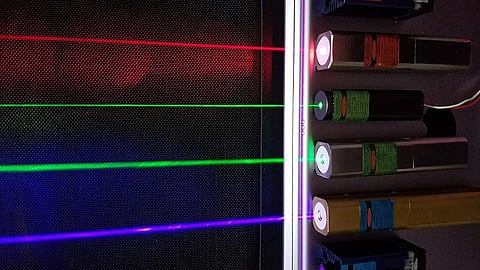

Healthcare has undergone significant advancements that have increased treatment options, improved efficiency, and enhanced treatment outcomes. Laser is one such advancement in dentistry. Laser stands for light amplification by stimulated emission of radiation.
History of Laser:
The first laser was developed by Theodore H. Maiman in 1960, which was previously known as a maser. The first report of laser exposure to vital human teeth was given by Leon Goldman in 1965 . Other types of lasers were actively researched from the 1960s to the 1980s. Lobene et al. discovered in 1966 that a CO2 laser with a wavelength of 10.6 micrometres is well absorbed by enamel and can be used to seal pits and fissures and prevent dental caries. In 1985, Pick et al. first used a CO2 laser for periodontal surgery . There is strong research evidence that current laser systems have the potential to replace dental drills in various cases .
Types of dental lasers:
Dental lasers come in two general categories: surgical lasers and non-surgical lasers. Hard and soft tissue lasers are yet another division of surgical lasers. Soft tissue lasers are utilised for procedures involving soft tissues like gums, while hard tissue lasers are used to cut hard tissues like teeth. Non-surgical lasers are used for procedures including removal of fillings and caries diagnosis.
Benefits of dental lasers:
There are many dental procedures where lasers are employed. At low dosages, lasers encourage cell growth and aid in wound healing. Low energy laser photo stimulation of recurring herpetic lesions in the oral cavity aids in pain alleviation. Disinfection, exposing unerupted or partially erupted teeth, tissue removal, treating dental hypersensitivity, preparing cavities, removing caries and restorative materials, and recontouring gums, teeth whitening, and root canal treatment are other widespread uses of lasers.
How safe are dental lasers?
“The potential risks of dental lasers include injury to gums and tooth pulp. However, these negative effects are rare , minimal and manageable. When handled carefully and ethically, lasers have become a crucial tool in dental treatments, simplifying difficult procedures, saving time, and improving patient outcomes.”
Dr. Vijay kumar, Dental practitioner
There is less chance of infection and reduced recovery time for patients. In addition, lasers are FDA authorised, making them a safe option for dental use. The laser beam is shielded from the patient's eyes by the dentist, further enhancing the safety of the procedure. Laser is also helpful in soothing any anxieties that patients may have about the procedure because it is less threatening than a drill. Additionally, after laser treatment, less anaesthetic or suturing is required. Also, when laser dentistry is employed as a treatment option, there is a noticeably lower risk of bleeding, bacterial infection, or tissue damage.
Join MedBound - an ecosystem for students and professionals of medical and health sciences.
Subscribe to MedBound Times - one of the best medical blogs for medical students.
